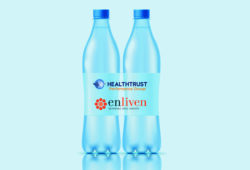Doctors have a variety of opinions on incentive-based compensation, as well as the related area of clinical value analysis.
Physicians have mixed and, in some cases, impassioned feelings about gainsharing—incentive-based payments made by hospitals to physicians who help them reduce inpatient costs and improve care outcomes through increased use of best practices. Gainsharing is a key feature of bundled payment programs, most notably models being tested by the Centers for Medicare & Medicaid Services (CMS). When structured well, gainsharing can serve as foundation for collaborative efforts to improve the patient experience and outcomes, as well as CMS costs. Otherwise, it’s a violation of fraud and abuse laws designed to prevent physician inducement to reduce or limit services to patients.
Recent conversations with HealthTrust physician advisors have uncovered distinct takes on the practice of gainsharing, among them:
No thank you. Mirroring the sentiment of the American Academy of Orthopaedic Surgeons, Dwight Tyndall, M.D., FAAOS, a partner at the Center for Minimally Invasive Surgery in Munster, Indiana, is no fan of gainsharing. He believes it can subtlety sway even the most altruistic, high-minded surgeon to put financial gain above benefits to their patients. But getting a spine program formally accredited may leave a hospital with few options beyond gainsharing, he adds, at least if the program is served by private rather than employed physicians.
Tyndall proposes that hospitals accomplish the objectives of gainsharing, minus the ethical and legal hassles, with a collaborative strategy that sounds a lot like a robust clinical value analysis program. His idea? Let product reviews and decisions be made by rank-and-file nurses and physicians rather than a cost-conscious purchasing manager. Participants could be voted into the position by colleagues in their department, whose feedback they solicit and collective voice they represent—meaning no more sudden, maddening product changes. Everyone would know well in advance the timetable on decisions that need to be reached and how they’re made, as well as recognizes the need for compromise. Physicians opposed to a planned product conversion proactively confront suppliers to see if they can better align product price and value.
And he’s not just talking high-cost surgical drills and customized implants, but also drapes, gowns, masks and gloves—supply chain decisions that can also have a strong physician preference component even if the people using those products eight hours a day are rarely asked to weigh in with their opinion. The cost of such commodities can be extremely high over the long term because they’re used in every single surgical case, he notes. Tyndall says he has seen health systems switch to a lower quality glove, without consulting with physicians, only to end up buying twice as many because physicians ripped through them more often. Poor choices can also add to the cost of hauling away a lot of extra trash.
We’re ready. The hospital where cardiothoracic surgeon Atiq Rehman, M.D., practices (Lourdes Health System in Camden, New Jersey) wasn’t selected by the CMS to participate in its mandatory cardiac care bundled payment program being launches later this year. But he and his colleagues feel prepared for gainsharing discussions, leveraging their experience with the Lourdes LHS Health Network ACO covering some 100,000 lives. Gainsharing is a decidedly local phenomenon that is logically tied to the development of a robust IT system to monitor patients, prevent readmissions and decrease skilled nursing facility costs, he says. Value analysis, in contrast, spans the continuum—starting at the GPO (HealthTrust) level, extending to member health systems and ending at the hospital level.
Too many unknowns. That’s the position of Christopher Kauffman, M.D., a Nashville, Tennessee-based orthopedic spine surgeon. For cost savings to the hospital to be potentially meaningful, gainsharing needs to be done with enough physicians to account for most of the overall case volume. And what are the potential ramifications if physicians divert their business from a hospital that doesn’t gainshare to one where they have some skin in the game?
More importantly for physicians is how gainsharing works over the long term. If doctors switch to a different brand of implant that saves the hospital money and are partners in the shared savings in year one, what happens in year two when the savings has already been realized? Are physicians allowed to go back to their original choice and gainshare their way back to the lower cost brand in subsequent years? Or is this all part of the front-end negotiations? (Read on for more on this topic).
Another legitimate concern, Kauffman adds, is that hospitals in gainsharing arrangements with surgeons will diminish the role of the medical device rep in the OR to that of someone who simply fills in case carts with the correct number of implants—and lacks the knowledge to fix any mechanical-type problems that can emerge with the instrumentation. For patients, that introduces the risk of more time in the OR—perhaps even the inconvenience of a repeat procedure.
Gainsharing has its place. Aaron Kugelmass, M.D., chief of the cardiology division and director of the Heart and Vascular Center at Baystate Medical Center in Springfield, Massachusetts, has seen well-structured gainsharing arrangements work out favorably for physicians. “It’s not just the remuneration, but the clinical cohesion and improvement that can result when physicians and hospitals work together to improve value. This is much more than reducing supply chain costs; it includes significant clinical pathway changes that reduce costs, while improving outcomes.” He has also seen a cardiac surgery group decline to gainshare because the physicians didn’t want it to appear that they might financially benefit from less costly clinical practices (details of which were in a mandatory consent form patients had to sign).
Admittedly, gainsharing has its downsides, says Kugelmass, whose facility is not currently scheduled to participate in any of the mandatory cardiac bundled payment models of CMS. Participating doctors might start engaging in activities purely for financial reasons, for instance.
Gainsharing and value analysis could logically go together, Kugelmass adds, although it’s unclear how often they actually do. And multi-year gainsharing agreements could be written in such a way that participating physicians get ongoing credit for their efforts in earlier years, adjusted for market forces.
Share Email Cardiology, Facilities Management, Medical Devices, Operations, Patient Experience





